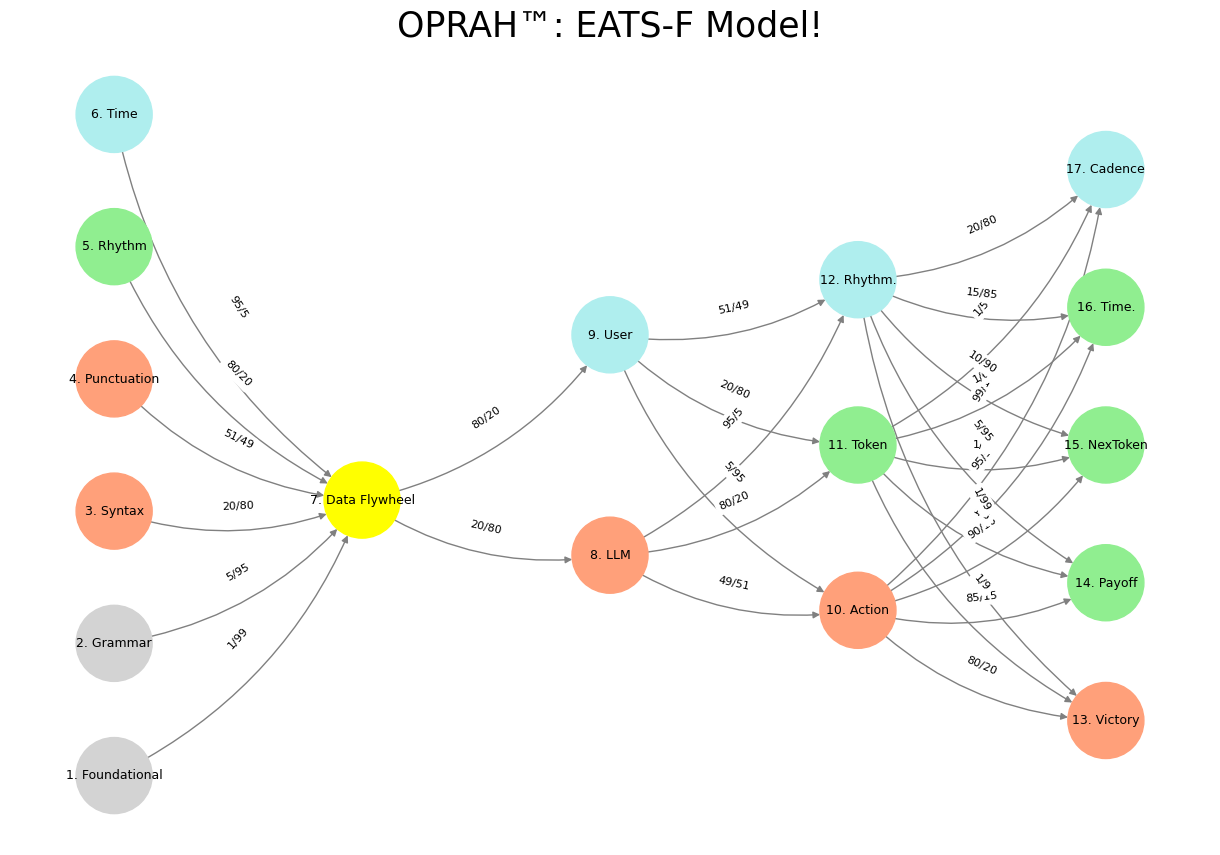Ecosystem#
Proteomic aging is not merely the accumulation of damage but the very syntax through which biological time inscribes itself upon the proteome. It is the living grammar of cellular fate, where proteins—those primary actors of metabolism, structure, and repair—undergo their own phonetic shifts, syntactical reconfigurations, and melodic rewritings. If DNA is the language of inheritance, then proteins are the embodied speech of life itself, articulating the flux between order and entropy, coherence and degradation.
The proteome, ever dynamic, is governed by the interplay of structure and fluidity. Post-translational modifications act as the prosody of this system, introducing nuance and emphasis, regulating function with the precision of a conductor adjusting the tempo of a symphony. Oxidation, glycation, phosphorylation—these modifications accumulate like a chorus repeating itself across measures, signaling the gradual transformation from youthful plasticity to aged rigidity. The proteostasis network, once a harmonious balance of synthesis, folding, and degradation, begins to falter. Heat shock proteins, the molecular chaperones that once ensured structural integrity, fade like forgotten refrains. Sirtuins, those guardians of metabolic cadence, struggle to maintain the rhythm of cellular resilience. Aging, in this sense, is an adversarial mode of engagement, where the self finds itself increasingly at odds with the very architecture that once sustained it.

Fig. 10 Hubris. The function of hubris in tragedy is to interrogate static vs. dynamic equilibria. Should we expect Mozartean cadences or eternally recurrent Wagnarian melodies? Should the trial and error ever end? Should we ever decelerate –rest– from the Red Queen Hypothesis? Do immutable laws from the cosmos demand immutable laws in our physics, biology, and intelligence if ever our loss is to be optimized?#
Yet, within this entropy, patterns emerge. The proteomic signature of aging is not random noise but a structured composition, one that can be read and anticipated. Plasma proteomic clocks—data-driven algorithms mapping protein expression to biological age—offer a glimpse into the score of senescence. Here, the proteome does not merely reflect the passage of time but encodes its probabilistic trajectory. These signatures form the syntax of longevity itself, an evolving corpus where health and decline are but differing interpretations of the same structural motifs.
Metabolic shifts, inflammatory cascades, mitochondrial dysfunction—these are the adversarial movements of the aging proteome, tokens of an ecosystem in tension. Proteins, once cooperative agents in the symphony of cellular function, find themselves enmeshed in degenerative motifs. The misfolded aggregates of Alzheimer’s, the fibrotic stiffness of collagen, the dysregulated kinases of cancer—all are distortions of an underlying theme. Here, the proteomic landscape bifurcates: one path leads to disorder, another to adaptation.
The intervention, then, is one of dynamic capability. If aging is a drift toward adversarial equilibria, then longevity is the navigation of iterative pathways, a strategic engagement with proteomic architecture. Therapies that enhance proteostasis, from NAD+ precursors to chaperone-modulating compounds, act not as blunt corrections but as recalibrations of the proteomic cadence. Rapamycin, senolytics, caloric restriction—all introduce perturbations, forcing the system to reweight its priorities, to learn anew the grammar of renewal.
Ultimately, proteomic aging is not a mere function of degradation but an emergent narrative—a system of constraints and affordances, of entropy and adaptation. To understand it is to recognize that language, music, and biology share the same deep structures: an ecosystem of rules, a syntax of relationships, and a melody of temporal unfoldings. Heraclitus’ river flows through the proteome as it does through thought, and in that ceaseless motion, intelligence emerges—not by resisting change, but by composing with it.
Show code cell source
import numpy as np
import matplotlib.pyplot as plt
import networkx as nx
# Define the neural network layers
def define_layers():
return {
'Suis': ['Foundational', 'Grammar', 'Syntax', 'Punctuation', "Rhythm", 'Time'], # Static
'Voir': ['Data Flywheel'],
'Choisis': ['LLM', 'User'],
'Deviens': ['Action', 'Token', 'Rhythm.'],
"M'èléve": ['Victory', 'Payoff', 'NexToken', 'Time.', 'Cadence']
}
# Assign colors to nodes
def assign_colors():
color_map = {
'yellow': ['Data Flywheel'],
'paleturquoise': ['Time', 'User', 'Rhythm.', 'Cadence'],
'lightgreen': ["Rhythm", 'Token', 'Payoff', 'Time.', 'NexToken'],
'lightsalmon': ['Syntax', 'Punctuation', 'LLM', 'Action', 'Victory'],
}
return {node: color for color, nodes in color_map.items() for node in nodes}
# Define edge weights (hardcoded for editing)
def define_edges():
return {
('Foundational', 'Data Flywheel'): '1/99',
('Grammar', 'Data Flywheel'): '5/95',
('Syntax', 'Data Flywheel'): '20/80',
('Punctuation', 'Data Flywheel'): '51/49',
("Rhythm", 'Data Flywheel'): '80/20',
('Time', 'Data Flywheel'): '95/5',
('Data Flywheel', 'LLM'): '20/80',
('Data Flywheel', 'User'): '80/20',
('LLM', 'Action'): '49/51',
('LLM', 'Token'): '80/20',
('LLM', 'Rhythm.'): '95/5',
('User', 'Action'): '5/95',
('User', 'Token'): '20/80',
('User', 'Rhythm.'): '51/49',
('Action', 'Victory'): '80/20',
('Action', 'Payoff'): '85/15',
('Action', 'NexToken'): '90/10',
('Action', 'Time.'): '95/5',
('Action', 'Cadence'): '99/1',
('Token', 'Victory'): '1/9',
('Token', 'Payoff'): '1/8',
('Token', 'NexToken'): '1/7',
('Token', 'Time.'): '1/6',
('Token', 'Cadence'): '1/5',
('Rhythm.', 'Victory'): '1/99',
('Rhythm.', 'Payoff'): '5/95',
('Rhythm.', 'NexToken'): '10/90',
('Rhythm.', 'Time.'): '15/85',
('Rhythm.', 'Cadence'): '20/80'
}
# Calculate positions for nodes
def calculate_positions(layer, x_offset):
y_positions = np.linspace(-len(layer) / 2, len(layer) / 2, len(layer))
return [(x_offset, y) for y in y_positions]
# Create and visualize the neural network graph
def visualize_nn():
layers = define_layers()
colors = assign_colors()
edges = define_edges()
G = nx.DiGraph()
pos = {}
node_colors = []
# Create mapping from original node names to numbered labels
mapping = {}
counter = 1
for layer in layers.values():
for node in layer:
mapping[node] = f"{counter}. {node}"
counter += 1
# Add nodes with new numbered labels and assign positions
for i, (layer_name, nodes) in enumerate(layers.items()):
positions = calculate_positions(nodes, x_offset=i * 2)
for node, position in zip(nodes, positions):
new_node = mapping[node]
G.add_node(new_node, layer=layer_name)
pos[new_node] = position
node_colors.append(colors.get(node, 'lightgray'))
# Add edges with updated node labels
for (source, target), weight in edges.items():
if source in mapping and target in mapping:
new_source = mapping[source]
new_target = mapping[target]
G.add_edge(new_source, new_target, weight=weight)
# Draw the graph
plt.figure(figsize=(12, 8))
edges_labels = {(u, v): d["weight"] for u, v, d in G.edges(data=True)}
nx.draw(
G, pos, with_labels=True, node_color=node_colors, edge_color='gray',
node_size=3000, font_size=9, connectionstyle="arc3,rad=0.2"
)
nx.draw_networkx_edge_labels(G, pos, edge_labels=edges_labels, font_size=8)
plt.title("OPRAH™: EATS-F Model!", fontsize=25)
plt.show()
# Run the visualization
visualize_nn()


Fig. 11 For the eyes of the Lord run to and fro throughout the whole earth, to shew himself strong in the behalf of them whose heart is perfect toward him. Herein thou hast done foolishly: therefore from henceforth thou shalt have wars. Source: 2 Chronicles 16: 8-9. The grammar of these visuals is plain: there’s a space & time for the cooperative rhythm, transactional, and adversarial.#

